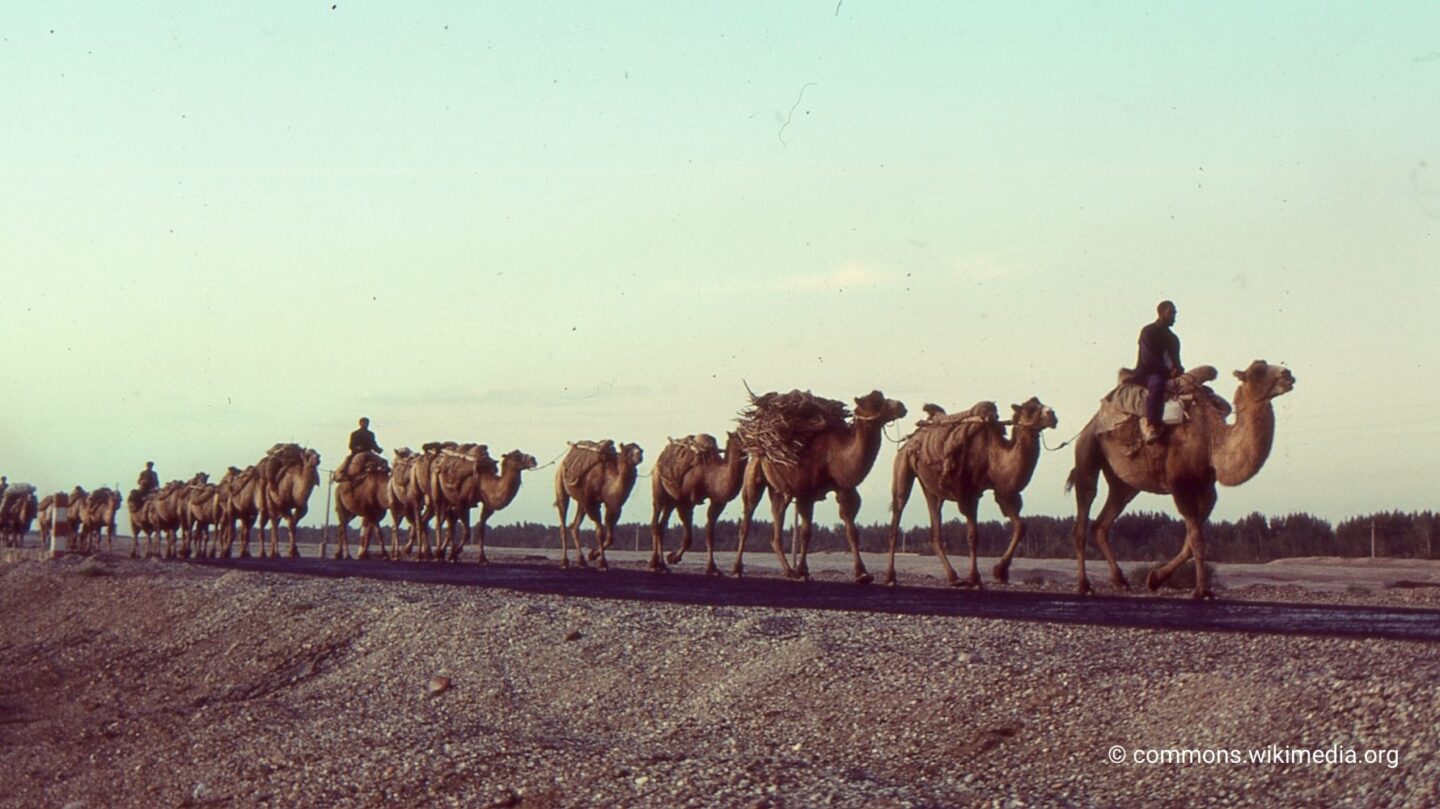The Origins of the Silk Road
The Silk Road, a network of trade routes spanning thousands of miles, was one of the most significant conduits of commerce and cultural exchange in human history. Established during the Han Dynasty of China around 130 BCE, it connected East Asia to the Mediterranean, traversing deserts, mountains, and vast plains.
While silk was the most famous commodity transported along this route, the Silk Road facilitated the exchange of countless goods, including spices, precious metals, textiles, and ceramics. It wasn’t a single road but rather a complex web of interconnected trade networks, linking civilizations from China, India, and Persia to Greece, Rome, and beyond.
A Highway for Goods and Ideas
The Silk Road was more than just a trade route; it was a bridge between cultures. As merchants traveled from one region to another, they not only exchanged goods but also shared knowledge, technology, and ideas. This cultural diffusion played a vital role in shaping the ancient world.
For example, paper, an invention of ancient China, spread westward through the Silk Road, revolutionizing communication and record-keeping in Europe and the Middle East. Similarly, the knowledge of glassmaking traveled eastward, influencing Chinese artisans.
Religious beliefs also spread along the Silk Road. Buddhism, originating in India, made its way to China and East Asia through merchants and missionaries. At the same time, Zoroastrianism, Christianity, and Islam found new adherents along these routes. This blending of spiritual traditions enriched the cultures of every civilization connected to the Silk Road.
The Economic Impact of the Silk Road
The Silk Road was an economic powerhouse that fueled the prosperity of the regions it connected. Major cities along the route, such as Samarkand, Kashgar, and Palmyra, thrived as bustling trade hubs. These cities became melting pots of culture, where merchants, scholars, and travelers from different backgrounds exchanged ideas and innovations.
The demand for luxury goods like Chinese silk, Indian spices, and Persian carpets created economic interdependence between distant regions. This trade fostered the growth of powerful empires, such as the Han Dynasty in China, the Persian Empire, and the Roman Empire, all of which benefited from the wealth generated by the Silk Road.
The Challenges of the Journey
Traveling the Silk Road was not for the faint of heart. Merchants and caravans faced harsh environments, from the scorching deserts of Central Asia to the treacherous mountain passes of the Himalayas. Bandits and political instability posed constant threats, making the journey perilous.
Despite these challenges, the rewards were immense. The high value of silk and other luxury goods made the risks worthwhile, and caravanserais—roadside inns—sprang up along the route to provide shelter and safety for travelers.
The Decline of the Silk Road
The Silk Road’s importance began to wane in the late Middle Ages. The rise of maritime trade routes in the 15th century, driven by European exploration, provided faster and safer alternatives for transporting goods. Additionally, political changes, such as the fragmentation of empires along the route, disrupted trade.
However, the legacy of the Silk Road endured. The cultural and technological exchanges it facilitated had already transformed the ancient world, laying the foundation for the interconnected global economy we know today.
A Legacy of Connection
The Silk Road was more than a trade route; it was a lifeline that connected civilizations and shaped the course of history. It fostered economic growth, cultural exchange, and technological innovation, leaving an indelible mark on the ancient world.
Today, the legacy of the Silk Road lives on as a symbol of collaboration and connection, reminding us of the power of trade and cultural exchange to unite people across vast distances. Its impact is a testament to humanity’s ability to bridge divides and create a shared legacy.
